The Most Haunted Castles in the World
These are history's most haunted castles, ranging from the stronghold that inspired Mary Shelley's "Frankenstein" to the palace that once held the genuine Dracula.

History is frequently forged between walls, and these haunting castles are no exception.
Several of these fortifications have bloody histories full with tales of revenge, mysticism, and even cold-blooded murder. As a result, these beautiful but dilapidated estates have evolved from their magnificent origins into some of the most haunted sites on the planet, according to some.
For example, Edinburgh Castle in Scotland is reputed to be one of the most haunted locations in the country. Its unrivaled paranormal activity includes poltergeists and demonic entities purportedly spawned by the enormous violence that occurred inside its dungeons, as well as its underground confinement for Black Plague victims.
In Germany, there's also the famed Castle Frankenstein, which earned its name from its purported link to the celebrated novelist Mary Shelley, who authored Frankenstein. The haunted castle is claimed to be a gathering point for witches looking for the legendary "fountain of youth" that is said to be located on its grounds.
Yet these bizarre tales are only the beginning – check out some more of these haunted castles below.
Moosham Castle In Unternberg, Austria
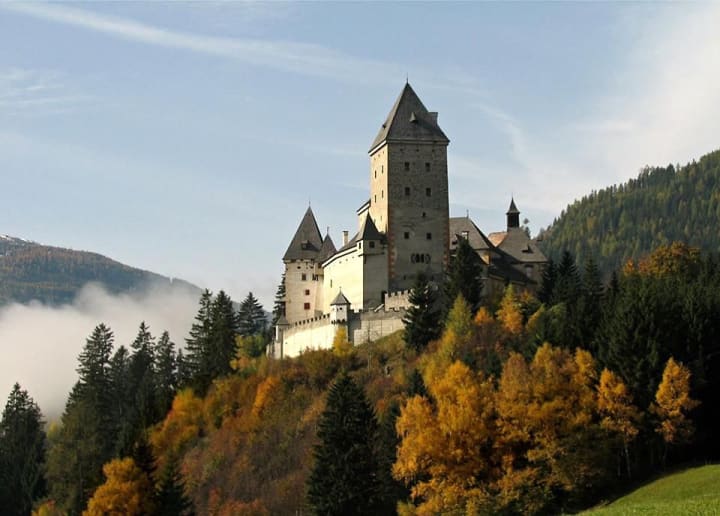
The Austrian Moosham Castle, or Schloss Moosham, has a grim past intertwined with European witch hunts. The stronghold was first mentioned in a 1191 deed and was given its name by the Moosheim family, who inherited it in the 13th century.
By the 17th century, however, the people of Austria had been subjected to a series of witch hunts, culminating in the Salzburg Witch Trials. Hundreds of individuals were accused of witchcraft, especially women, and many of them were paupers and peasants, and they were alleged to have been imprisoned and tortured at Moosham Castle. Before being executed, some captives had their hands severed and brandished with iron stamps.
While those innocent folks were almost definitely not magical entities, Moosham was associated with another eerie creature: werewolves. These half-man, half-beast monsters were said to wander around the castle, as proven by the unexplained murder of deer and livestock in the 1800s.
It's no surprise that Moosham Castle is claimed to be haunted, most likely by the souls of the victims that were tortured there.
Tourists and current castle employees claim to have witnessed unexplainable phenomena while at the palace. Other people have reported feeling a light touch or breath despite being alone, hearing loud bangs and footsteps at night, and seeing unexpected clouds of white mist.
The Dracula's Haunted Castle In Bran, Romania
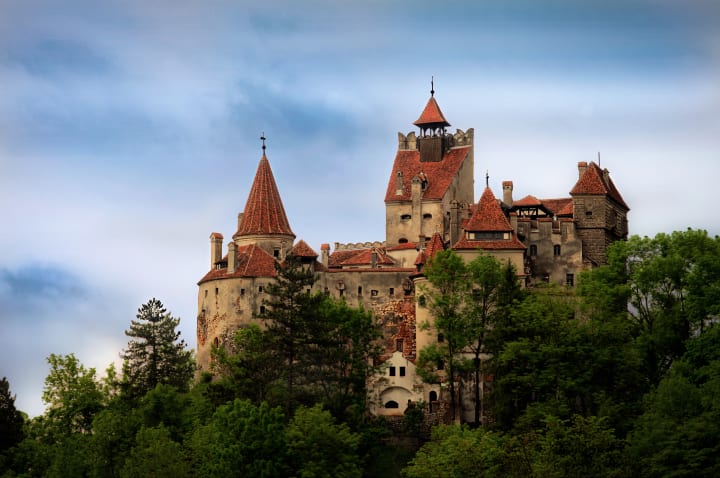
One of Eastern Europe's most ominous castles may be found in the highlands of Romania. Its remote position in the Romanian countryside should make anyone reconsider knocking on its door. More than that, Bran's Castle has developed a frightening reputation due to its relationship with history's actual Dracula.
The castle was reputedly the home of Vlad III, well known as Vlad the Impaler due to his extremely horrific torturing tactics. In the 15th century, Vlad governed Wallachia and acquired the moniker Vlad Dracula after his father, Dracul. Yet, his unrivaled reputation for savagery, particularly his preferred style of torture, was well known across Europe.
When a poor person was impaled, a wooden or metal pole was poked into their body, beginning in the rectum or vagina. It would then progressively puncture the victim's body until it emerged out the victim's lips, shoulders, or neck. The pole was often rounded so that it could pass through the victim's body without puncturing any internal organs, thus prolonging the victim's torment. In certain especially heinous circumstances, the person might die for hours or even days.
Vlad was notorious for imprisoning and torturing opponents, including other nobility. Despite his bloodthirsty antics, Pope Pius II admired Vlad and lauded him as a Romanian national hero for his iron-fisted leadership, which helped preserve the area during times of conflict.
Yet, it is reported that Dracula's castle's corridors are now haunted by the spirits of those who were tormented by him.
Himeji Castle In Hyōgo, Japan
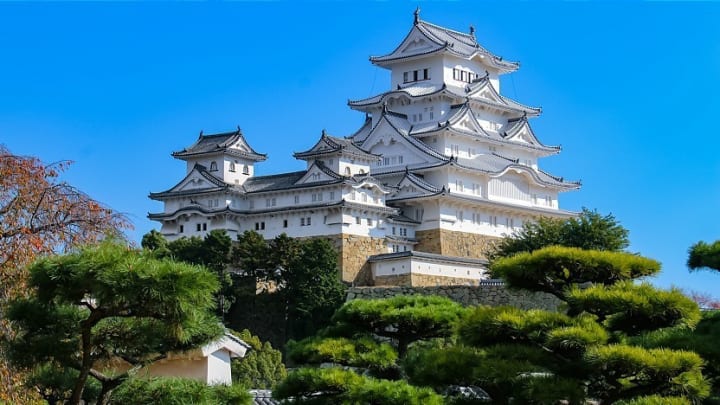
Himeji Castle, commonly known as the "White Heron" because of its dazzling white exterior on a hilltop in the midst of Hygo, is one of Japan's most famous tourist spots. The castle's tumultuous history, however, has drawn aficionados of the uncanny. The mythology even inspired the terrible Japanese horror film Ringu, which was subsequently remade in the United States as The Ring.
The haunted castle was built in 1333 as part of a defense fort led by Akamatsu Sadanori, whose father was a samurai and the territory's ruler. Himeji, like other historic castles in Japan, had multiple owners.
The castle underwent multiple renovations when it was given upon Ikeda Terumasa, a notable statesman during the early Edo period. Among its improvements was the creation of meandering roads as a defensive technique to confound intruders. The dread of Himeji Castle, however, is rooted in the mythology of one of its past owners. The castle was previously owned by Tessan Aoyama, a samurai who fell in love with his servant Okiku.
But when Okiku refused him, the aristocrat devised a nefarious scheme to compel her hand in marriage. He accused her of stealing a rare gold plate from the castle, an accusation that could lead to her torture and execution if she refused to accept him. To his amazement, Okiku still denied him, so the samurai murdered her by dumping her down the castle's well.
Her horrible murder apparently caused her soul to stalk the castle grounds every night, eventually driving Aoyama insane. The sinister story was eventually adapted into the 1998 Japanese film Ringu, in which an evil spirit creeps out of a well to stalk hapless trespassers.
UNESCO listed the palace as a World Historic Site in 1993. Visitors to Himeji may still see the famed well, albeit a barrier has been placed around it to prevent anybody else from falling to their death.
Leap Castle In County Offaly, Ireland
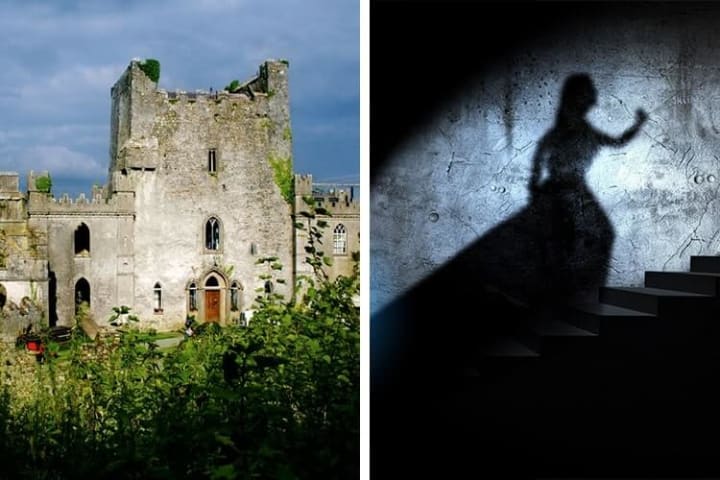
Given that the castle was reputedly constructed on bloodshed, Leap Castle is claimed to be one of Ireland's most haunted structures.
The fortress was built in the early 1500s and was originally named Leim Ui Bhanain, which means "Leap of the O'Bannons," a tribute to the Irish chieftain who initially held it. Yet, history has it that before the castle was built, two of the O'Bannon brothers challenged another reigning family, the O'Carrolls, to a duel. Whoever lived in the palace after plunging from the rocky outcrop where the new castle was planned to be erected would be the area's primary governing dynasty. One of them perished as a result of the incident.
The O'Carrolls were also said to be notorious for their severe ferocity. When the O'Carrolls took over the palace in 1532, one of the sons is supposed to have stabbed his priest brother to death. The murder occurred within the castle's church, today known as the Bloody Chapel.
Leap castle was also built on a recognized druid initiation site, which was an old Celtic class of religious leaders. The druids apparently thought that the region was inside the crossing of the so-called Ley Lines, which separated the living and spiritual realms.
As a result, the historic castle has seen a number of mysterious sightings. There are, for example, the spirits of Emily and Charlotte, who purportedly resided on the estate in the 1600s. The spirits of these two tiny girls are claimed to be seen playing in the main hall on occasion.
Nonetheless, the castle is said to be haunted by an evil ghost. This demonic entity, simply known as "the Elemental," is claimed to have existed since the time of the druids and comes whenever it is provoked. With so many phantom tenants, it's little surprise that Jump often ranks among Europe's most haunted castles.
Chillingham Castle In Chillingham, England
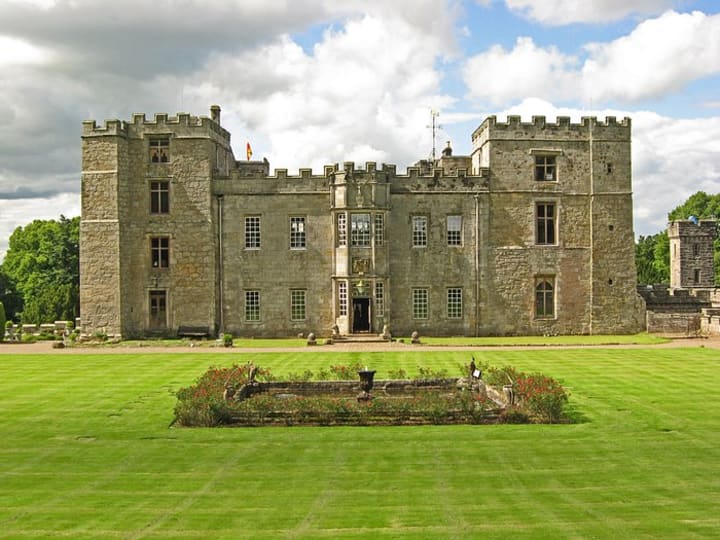
Chillingham Castle almost appears magnificent with the appropriate lighting and conditions. There are tea rooms, lovely grounds, and its own lake on the estate. But don't be misled, as this 13th-century English castle has been named "Britain's most haunted medieval castle."
Chillingham Castle is noted for having some of the country's highest levels of paranormal activity. Several visitor testimonies describe frightening apparitions, prompting Chillingham to be the topic of paranormal investigations by television series such as the Scariest Places on Earth and Ghost Hunters International.
The American poet Henry Wadsworth Longfellow regarded Chillingham as a magical hotspot:
"All houses where men have lived and died are haunted houses: innocuous phantoms on their missions glide through the open doors, with feet that make no noises on the floorboards."
The spirits of Lady Mary Berkeley, a previous inhabitant whose husband cheated on her with her sister, are among the castle's more famous ghosts. Her presence is claimed to walk the magnificent corridors of Chillingham, notably the Grey's Apartment, where she reputedly died of grief.
There is also the "blue boy" apparition, who is supposed to be the source of frantic cries heard at midnight. Guests are said to have seen the young kid ghost lingering around their mattresses on a regular basis. The blue kid is thought to be the spirit of the youngster whose bones were discovered inside the Pink Bedroom's strong walls. It is still unknown how the remains ended up inside.
The most bizarre aspect of this famed haunted castle is that tourists who don't mind unwelcome guests can hire a room at the castle for an overnight stay.
Castle Frankenstein In Odenwald, Germany
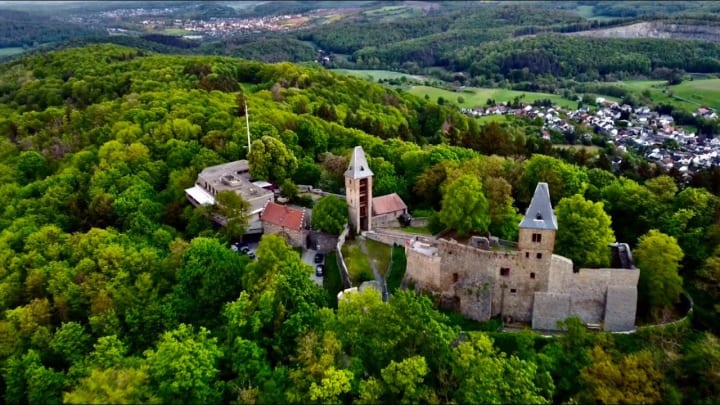
Castle Frankenstein is one of Europe's most known haunted castles, surrounded by impenetrable woodland and with a history of witchcraft and alchemy.
Although numerous other sites in Germany have the name "Frankenstein," the 13th-century castle's namesake has unique significance due to its purported links to Mary Shelley, author of the 1818 classic novel Frankenstein.
The mythology of Castle Frankenstein dates back to 1673, when Johann Conrad Dippel was born on the estate. Dippel eventually became the most infamous inhabitant of the castle, and was described as an eccentric scientist concerned with extravagant alchemy.
He allegedly carried out horrible experiments on animal carcasses. But, he is also accused of using human body parts taken from the dead of the adjacent Nieder-Beerbach cemetery. He also concocted the enigmatic "Dippel's Oil," a distillation of blood, leather, horns, and ivory that he said was the "elixir of life" capable of curing any illness.
Dippel's activities supposedly irritated the local mayor, who disseminated stories that Dippel was the devil's blood brother and was attempting to construct a virgin-preying monster in his castle's laboratory. Is this a story you've heard before? That should, because it's a more macabre version of Mary Shelley's Frankenstein's monster mythology.
It's said that the Brothers Grimm told Shelley's stepmother about Dippel's wild past, which gave her the inspiration for the narrative in the first place. Shelley herself visited the German area in 1814, four years before the publication of her work.
But, the castle's haunting history may be more than just fairytales. The woodland around the castle is supposed to be a famous location for witch meetings in Germany, and witches frequent the secluded region to drink from the magical "fountain of youth" on the grounds.
Every October, the huge estate is converted into a real-life haunted house, with actors dressed as ghosts and goblins roaming about for what is considered the largest Halloween event in the country.
Edinburgh Castle In Scotland
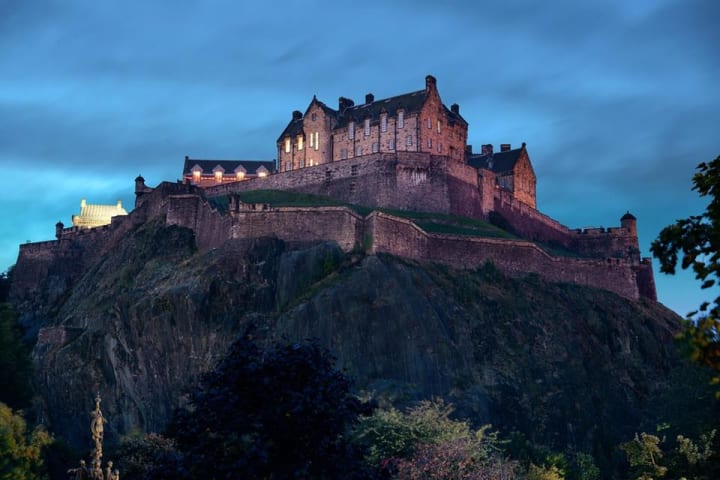
When it comes to haunted castles, Edinburgh Castle is by far one of the most haunted in Europe. The castle is famed for its high levels of paranormal activity, which stems from its grim past of torture, executions, and even Black Plague fatalities.
In the 12th century, Edinburgh Castle was erected as a military fortification before being converted into an estate. The edifice, like any 900-year-old castle, has a spate of dungeons where a lot of renowned persons were formerly imprisoned.
Apart from its gruesome execution history, Edinburgh Castle is situated near the Real Mary Kings Close (close is a Scottish term for "alleyway"), which has been said to be haunted since at least the 17th century. The subterranean location formerly housed Black Plague victims who were left for dead.
Most notably, Edinburgh Castle was the location of one of history's greatest paranormal tests. The inquiry, which took place in 2001, featured a team of nine researchers and almost 200 volunteers spread across the famously eerie estate.
Everyone participating in the project was urged to keep an eye out for any indicators of ghostly activity without being told which portions of the castle were said to be commonly haunted. In the end, 51% of those who were put in the castle's haunted sections reported some form of paranormal incident.
In comparison, just 35% of interviewees indicated they had witnessed comparable unexplainable sightings in non-haunted regions. Visitors reported feeling a sudden coolness in the air, having someone yank on their clothing, and seeing enigmatic dark figures surrounding the castle. There have also been reports of ghost dogs and French captives appearing.
Some argue that Edinburgh Castle is one of the scariest castles in Europe, but it's apparent that the competition is fierce.
Thank you for taking the time to read my new story!
About the Creator
Victoria Velkova
With a passion for words and a love of storytelling.






Comments
There are no comments for this story
Be the first to respond and start the conversation.